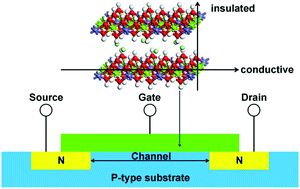Theoretical prediction of the carrier mobilities for M II2MIII-Cl-layered double hydroxides in three-dimensional directions†
Abstract
In recent decades, layered double hydroxides (LDHs) have received much attention in the field of functional materials as a two-dimensional platform material due to their structural flexibility and versatility. The investigation of the fundamental physical properties of LDHs is of great importance for developing their new application scenarios. The carrier mobility is an essential parameter for photocatalysts, electronic devices like field-effect transistors, etc. Therefore we have calculated the carrier mobilities for a series of representative MII2MIII-Cl-LDHs (MII = Mg, Ni, Zn; MIII = Fe, Ga) in the orthogonal x, y, and z directions. The carrier mobilities in the x and y directions are dealt with using deformation potential theory and those in the z direction are calculated with the Marcus theory. It is found that the carrier transportation is prohibited in the z direction for all the calculated MII2MIII-Cl-LDHs while that in the x or y direction is feasible (up to 2.025 × 103 cm2 V−1 s−1 for carrier mobility). Given that the carrier mobilities of the calculated MII2MIII-Cl-LDHs are moderate in the x or y direction but equal to 0 cm2 V−1 s−1 in the z direction, the calculated MII2MIII-Cl-LDHs with anisotropic carrier mobilities may be suitable to be applied as a gate insulator in field-effect transistors.



 Please wait while we load your content...
Please wait while we load your content...